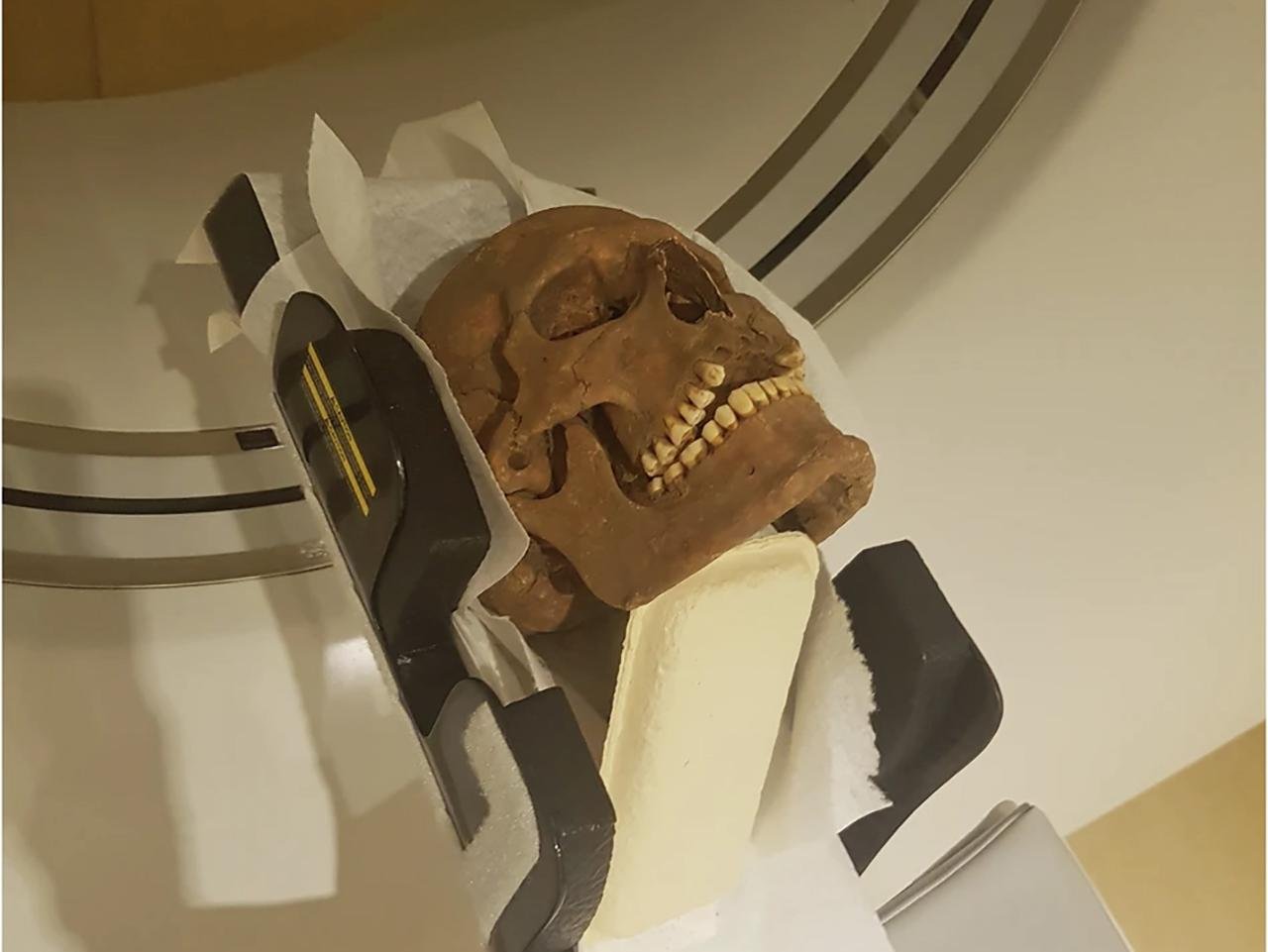A new study by scientists at the University of Gothenburg has shed light on the health of Viking-age people in Sweden, showing they suffered from many infections and skeletal diseases. The research, which was published in the British Dental Journal Open, used advanced CT scans to analyze the skulls of 15 Viking-era individuals. It found evidence of chronic ailments that would have made their lives much harder.
 Skull mounted in the CT-scanner. Credit: C. Bertilsson et al. BDJ Open (2025)
Skull mounted in the CT-scanner. Credit: C. Bertilsson et al. BDJ Open (2025)
The study focused on adults between the ages of 20 and 60. Results showed that many suffered from severe dental and maxillofacial diseases, including dental caries, periodontal disease, and periapical infections. The scans also uncovered signs of sinus and ear infections, osteoarthritis, and other skeletal conditions. This research suggests that these health problems were common and might have lasted for long periods because people back then didn’t have antibiotics or modern medical care.
Carolina Bertilsson, the lead researcher and an ᴀssistant professor at the University of Gothenburg, said: “The results of the study provide greater understanding of these people’s health and wellbeing. Everyone knows what it’s like to have pain somewhere, you can get quite desperate for help. But back then, they didn’t have the medical and dental care we do, or the kind of pain relief – and antibiotics – we now have. If you developed an infection, it could stick around for a long time.”
This research builds on earlier studies examining the dental health of a larger group of Viking-age individuals from Varnhem, a historic site in Sweden’s Västergötland province known for its well-preserved ancient graves. While past studies focused on teeth, this new study went further by analyzing entire skulls with CT scans. This allowed the team to identify skeletal changes that may have been missed during conventional examinations.
 Cyst of tooth 36, individual 12. Credit: C. Bertilsson et al. BDJ Open (2025)
Cyst of tooth 36, individual 12. Credit: C. Bertilsson et al. BDJ Open (2025)
CT imaging provided a non-invasive way to examine the remains, preserving them while extracting detailed medical information. “Very many of today’s archaeological methods are invasive, with the need to remove bone or other tissue for analysis. This way, we can keep the remains completely intact yet still extract a great deal of information,” Bertilsson said. The method helped detect bone alterations linked to chronic infections, such as sclerotization of the mastoid process, infection-induced periosteal bone deposition, and sinusitis-related bone changes.
The research involved collaboration with experts in dental radiology and an archaeologist from Västergötlands Museum. The researchers plan to expand on these results in future studies using CT scans to analyze a larger sample size and compare results with other Viking-age populations.
More information: University of GothenburgBertilsson, C., Borg, E., Vretemark, M. et al. (2025). Findings from computed tomography examinations of Viking age skulls. BDJ Open 11, 18. doi:10.1038/s41405-025-00309-9





